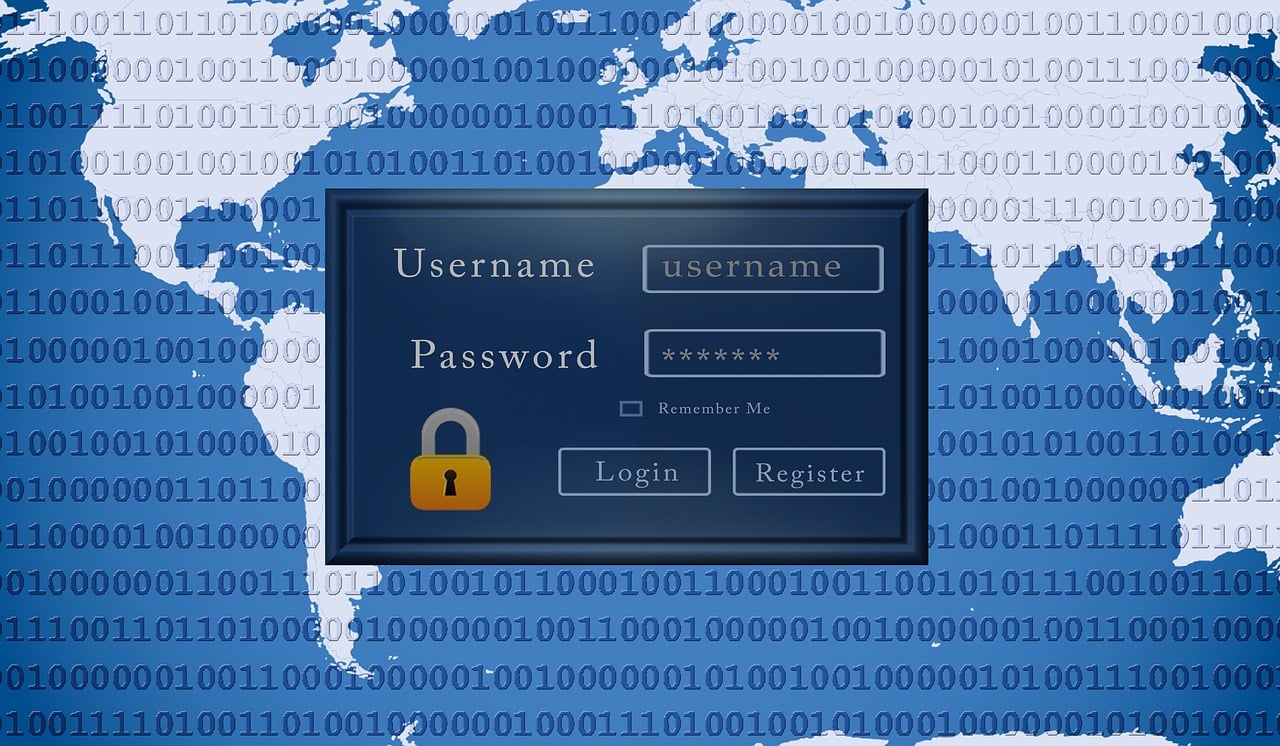Overview:
- Small and midsize businesses are top targets for cyberattacks due to limited defenses.
- Strong cybersecurity relies on basics: passwords, updates, training, encryption, and access control.
- Tools like firewalls, antivirus software, VPNs, and cloud backups help prevent breaches.
- A clear, well-practiced incident response plan speeds recovery and protects customer trust.
- Regular reviews and expert support from a managed service provider like Atekro strengthen long-term security and reduce business risk
Cyberattacks are an everyday risk for small and midsize businesses. With attackers growing more sophisticated and persistent, even one unprotected device, weak password, or unsuspecting employee can expose your entire organization. The reality is simple: a single breach can halt operations, drain revenue, and damage customer trust in ways that take years to repair.
That’s why proactive cybersecurity matters now more than ever. The financial, legal, and reputational fallout of a breach can be devastating, especially for businesses that don’t have the in-house resources to defend themselves. Without a clear strategy and the right tools in place, many organizations end up reacting after the damage is already done.
At Atekro, we help businesses strengthen their cybersecurity posture with practical protections designed for real-world workflows. Our approach combines expert guidance, industry-leading tools, and ongoing support to make security simple, scalable, and effective. From employee training and device protection to secure remote work and data recovery, we give you the confidence that your systems are protected.
With the right safeguards in place, you can reduce your risk, improve resilience, and maintain the trust your customers and partners rely on.
What is a data breach

A data breach occurs when information that was meant to stay private ends up in the hands of someone who shouldn’t have access to it. This can involve a wide range of sensitive data, from customer names and addresses to credit card or banking details, internal emails, passwords, employee records, and even health or legal documents.
Because attackers continue to evolve their tactics, data can be stolen in many different ways. Hackers may exploit vulnerabilities in your systems, employees may make accidental mistakes, insiders may intentionally leak information, or malware may infect your network and quietly siphon off data.
Once your information is compromised, the consequences can be severe. Stolen data can be used to scam your customers, commit financial fraud, or cause long-lasting damage to your brand. And the impact doesn’t stop there. The fallout from a breach often extends well beyond the initial incident, disrupting business operations, straining customer relationships, and affecting your ability to meet legal and regulatory requirements.
Why cybercriminals love small and midsize businesses
Contrary to popular belief, small and midsize businesses (SMBs) are among the top targets for cybercriminals in the United States. According to the U.S. Small Business Administration, 41% of U.S. small businesses have been victims of a cyberattack in recent years. In other words, nearly half of all small businesses have already experienced the disruption, financial loss, and stress that follow a breach.
Why are SMBs targeted?
Many small businesses operate without dedicated cybersecurity teams or advanced security infrastructure, which makes them much easier for attackers to penetrate. As large companies have strengthened their defenses, cybercriminals have shifted their attention to smaller organizations, exploiting their limited resources and false sense of security. The U.S. Chamber of Commerce reports that 60% of small businesses identify cyber threats as a top concern, yet many still underestimate their actual risk or believe they can handle an attack on their own.
Common attack methods
Phishing and ransomware remain the most frequent threats, often delivered through malicious emails or compromised websites. Cybercriminals also rely on supply chain attacks, targeting SMBs as entry points into larger organizations, particularly in industries like healthcare, transportation, and professional services.
Cybercriminals view SMBs as “soft targets” with valuable data and weaker defenses. The financial and reputational consequences of a breach can be devastating, which is why cybersecurity must be a critical priority for every small business.
What can go wrong after a breach
If your business is hit by a data breach, the impact goes far beyond replacing a few computers or resetting passwords. The real costs reach much deeper and can affect nearly every part of your organization.
- Lost Revenue:
Customers may lose confidence in your ability to safeguard their information and decide to take their business elsewhere. As word spreads, orders may be canceled, and new sales may decline, creating an immediate financial hit that can take time to recover from. - Legal Trouble:
Depending on the type of data involved and the industry you operate in, a breach can expose you to fines or legal action. Regulatory bodies may investigate how the incident occurred, and you may be required to notify affected individuals as well as local or federal authorities. - Reputation Damage:
A single damaging headline can erode years of trust with clients, partners, and the public. Restoring your reputation often takes significant time and financial investment and may require expanded marketing and public relations efforts to rebuild confidence. - Downtime:
If your systems are locked or compromised, your team may be unable to work. That downtime can quickly lead to missed deadlines, lost productivity, and financial losses as normal operations stall. - Stress and Time:
Investigating the breach, repairing systems, and communicating with customers, partners, and stakeholders can consume weeks or even months. Without a clear response plan in place, the disruption can feel overwhelming and place additional strain on your team.
How to protect your business in 12 steps

Let’s move from understanding the risks to taking action. These 12 proactive steps can significantly reduce the likelihood of a breach and help your business recover more quickly if one ever occurs.
1. Create better password habits
Strong passwords serve as your first line of defense against unauthorized access. Every account, device, and system should be protected with a password that is long, at least 12 characters, complex, using a mix of uppercase and lowercase letters, numbers, and symbols, and completely unique. Reusing passwords is one of the biggest risks you can introduce into your environment; if a single system is compromised, that reuse can quickly open the door to additional breaches.
To simplify password management and strengthen your overall security, use a reputable password manager. These tools generate strong, unique passwords on your behalf and store them securely, removing the need to memorize dozens of complex combinations. You should also enable Multi-Factor Authentication (MFA) wherever possible. MFA adds a crucial layer of protection by requiring a second form of verification, such as a code sent to your phone or a biometric scan, which makes it significantly harder for attackers to gain access even if they obtain a password.
Regularly review your organization’s password policies and educate your team on the importance of strong, unique passwords. As your business grows, consider implementing a Single Sign-On (SSO) solution to streamline access while maintaining a high level of security.
2. Keep software and devices updated
Outdated software is the digital equivalent of leaving your door unlocked. Hackers actively scan for systems running older versions of operating systems, office tools, antivirus programs, web browsers, and plugins. Because these outdated programs often contain known vulnerabilities, attackers can exploit them with very little effort.
To stay protected, enable automatic updates on all devices and software so you always receive the latest security patches. This applies not only to your computers and servers but also to mobile devices, routers, and any other connected equipment your business relies on. In addition, make it a regular policy to check for updates manually and confirm that all critical systems are running the most current versions.
Don’t overlook third-party applications and plugins. When left unpatched, they can introduce serious risks just as easily as outdated system software. A comprehensive update strategy, one that includes every tool and device in your environment, is essential for closing security gaps and keeping your defenses strong.
3. Train your team
Your employees play a critical role in shaping your company’s cybersecurity posture. In fact, weak cybersecurity practices, often caused by limited training, low awareness, or unclear policies, are responsible for the majority of breaches in small and mid-size businesses. That’s why cybersecurity awareness training should be an ongoing part of your operations, not a one-time exercise.
Employees need to know how to spot phishing emails, which often look completely legitimate but contain malicious links or attachments. They should understand how to avoid suspicious downloads, report anything unusual right away, and protect company information when working remotely. Even brief monthly refreshers can make a meaningful difference in keeping security top-of-mind.
Encourage a culture built on vigilance and accountability. Make it easy for employees to report potential threats or mistakes without fear of consequences. Provide clear, accessible guidelines on how to handle sensitive data and respond to incidents. Remember that your team is not only one of your greatest assets but also part of your defense against cyber threats.
4. Encrypt sensitive information
Encryption is one of the most effective tools you can use to protect your data. It transforms information into unreadable code that only someone with the proper key can unlock. This extra layer of protection keeps your information secure during transfers and ensures that, even if the data is stolen, attackers will struggle to use it or sell it.
To strengthen your security, implement encrypted email services for any sensitive communication so confidential messages can’t be intercepted or read by unauthorized parties. Go a step further by encrypting hard drives and cloud backups to protect data at rest. Whenever possible, make encryption the default setting across all devices and systems that handle sensitive information.
Finally, make sure your team understands why encryption matters and how to use encrypted tools effectively. Review your encryption policies on a regular basis and update them as needed to stay ahead of evolving threats.
5. Control access to information
Not every employee needs access to every piece of data. That’s why implementing strict access controls is essential for minimizing risk and protecting sensitive information. Apply the principle of “least privilege,” giving employees access only to the information they need to perform their jobs. Since roles and responsibilities evolve over time, review permissions every quarter to ensure they remain accurate and appropriate.
When someone leaves the company, revoke their access to all systems and data immediately. This includes disabling accounts, removing credentials, and confirming that former employees can no longer log in to any company resources. Using Single Sign-On (SSO) solutions can simplify this process and make it easier to manage access consistently across multiple platforms.
A well-designed permission system is critical to maintaining strong security, especially as your organization grows or adopts remote work policies. Conduct regular audits of your access controls and update them to reflect changes in your workforce and business operations.
6. Back up your data and then test your backups
Backups act as your safety net when data is deleted, corrupted, or held for ransom. But they only help if they’re recent, complete, and fully restorable. Make daily backups a standard practice, especially if your business generates or updates information frequently, so you always have an up-to-date copy ready.
Follow the 2-2-1 rule to strengthen your backup strategy: keep two copies of your data on different devices, two copies in different locations, and one copy offsite or in the cloud. Cloud recovery systems add an extra layer of protection and make it much easier to restore data quickly in the event of a disaster.
Testing your backups is just as important as creating them. Schedule monthly restoration tests to confirm that your backups work properly and that you can recover information efficiently. Document your backup procedures and train your team on how to use them so everyone knows what to do in an emergency.
7. Use firewalls and security software
Firewalls act as your network’s digital gatekeepers, blocking dangerous traffic and keeping attackers out before they can cause harm. Be sure to install firewalls on every device your business relies on, including routers, laptops, and workstations, and pay extra attention to devices used by employees who work outside the office. Adding software firewalls on individual devices gives you another layer of protection in case a threat manages to bypass your network-level defenses.
In addition to firewalls, use trusted antivirus and anti-malware tools to detect and remove malicious software. Make it a habit to scan your systems regularly and watch for unusual activity, such as unexpected file changes or unauthorized access attempts. Keeping your security software up to date ensures you’re protected against the latest threats and vulnerabilities.
Finally, help your team understand why these tools matter and how to use them effectively. Provide ongoing training, and put a simple policy in place to review your security tools regularly and update them as needed to maintain strong protection.
8. Secure your internet connection
Wi-Fi networks are often one of the weakest points in a business’s security. Start strengthening your network by changing default router passwords, which are typically easy for attackers to guess. Use WPA3 encryption to secure your wireless connections and help prevent unauthorized access to your systems.
You can take your security further by disabling network broadcasting, making your Wi-Fi less visible to potential attackers. Set up separate guest networks and ensure visitors can’t access your main business network. It’s also a good practice to review your Wi-Fi settings regularly and update them to follow current security best practices.
For employees working from home or outside the office, ensure their workstations have software firewalls enabled so their setups remain as secure as your office environment. In addition, educate everyone on the risks associated with public Wi-Fi and share clear guidelines for safe internet use.
9. Watch out for email traps
Many data breaches start with just one wrong click. Cybercriminals frequently rely on phishing emails to trick employees into revealing sensitive information or installing malware. These messages often look completely legitimate, appearing as fake invoices, urgent payment notices, or even notes from company executives.
To reduce your risk, train your team to check sender addresses carefully, hover over links before clicking, and report anything that seems suspicious. Encourage a “better safe than sorry” mindset so employees feel comfortable asking for help whenever they’re unsure about an email’s legitimacy.
Strengthen your defenses by implementing email filtering tools that block known threats before they reach your team. Make it a habit to review your email security policies regularly and update them to reflect new threats and emerging trends.
10. Use a VPN for remote work
Remote work introduces new cybersecurity risks, especially when employees connect through public Wi-Fi or other unsecured networks. A Virtual Private Network (VPN) adds both encryption and privacy, making it significantly harder for hackers to spy on internet traffic or intercept sensitive information.
Provide VPN access to all remote employees and require them to use it whenever they connect to company resources. Make sure your team understands why VPNs matter and offer training so they know how to use them effectively.
Be sure to review your VPN policies on a regular basis and update them as your workforce or operations evolve. You may also want to consider business-focused VPN solutions that offer stronger security controls and more robust management features.
11. Create a response plan before trouble hits
No matter how strong your defenses are, it’s essential to have a clear response plan in place before a breach occurs. A well-prepared plan can be the difference between recovering quickly and facing a long, costly crisis.
Begin by outlining the key steps you’ll take if a breach happens. Identify who will be responsible for managing the incident, and determine how you’ll communicate with customers, employees, and stakeholders. Clarify who will notify legal authorities or insurers, and define the process you’ll use to investigate and resolve the issue.
Document your response plan and run drills at least once a year so everyone understands their responsibilities. Make sure the plan includes clear guidelines for reporting incidents, containing threats, and restoring operations. Review and update it regularly to reflect new risks and any changes in your business.
Taking a proactive approach not only strengthens your ability to respond effectively, it also demonstrates your commitment to security and builds trust with your customers and partners.
12. Check your security regularly
Cybersecurity is not a “set it and forget it” job. Make it a habit to review your security policies and systems on a regular basis. Set a calendar reminder for monthly check-ins and use that time to watch for new threats, unusual login attempts, activity logs that don’t look right, software that needs updates, and any employee concerns or slip-ups that might signal a weakness.
Implement Single Sign-On (SSO) solutions to streamline access and strengthen security. Design a robust permission system that reflects your organizational structure and minimizes risk across teams and departments. For virtual employees, ensure the workstations they use outside the office have software firewalls enabled and are backed by clear guidelines for remote work security.
Regular audits and reviews help you stay ahead of emerging threats and ensure that your defenses remain strong over time. Encourage a culture of continuous improvement and make cybersecurity a core part of your overall business strategy, not just an occasional project.
What tools can help you stay protected
There are many affordable tools designed for small businesses that can help you implement these security measures:
Small businesses have access to a wide range of affordable tools designed to help strengthen their cybersecurity posture and support the security measures outlined in this guide:
- Password Managers: Tools like Keeper make it simple to create and manage strong, unique passwords for every account.
- Antivirus and Malware Protection: Solutions such as Sophos and Bitdefender offer comprehensive defense against viruses, ransomware, and a broad set of emerging threats.
- Firewalls: Options like Sophos and Zyxel, as well as built-in firewalls on routers and workstations, help block unauthorized access and keep your network secure.
- VPN Services: Providers such as NordVPN, ProtonVPN, and other business-focused VPN solutions offer encrypted connections that support secure remote work and protect data in transit.
- Cloud Backups: Services like Acronis and Microsoft 365 provide reliable backup and recovery capabilities to keep your data safe and accessible.
Take time to evaluate your needs and select tools that align with both your budget and your operational requirements. Make it a habit to review your technology stack regularly and update it to reflect current best practices and the latest security threats.
What will it cost
Cybersecurity does come with costs, licenses, tools, training, and expert support, but the cost of doing nothing is far greater. Data breaches can cost small and mid-sized businesses millions in lost revenue, legal fees, and long-term reputation damage. Lost customers and prolonged downtime can stall your growth and make recovery incredibly difficult.
It’s also important to remember that insurance companies may not pay out unless you’ve taken proper precautions. Investing in cybersecurity is essential not only for protecting your business but also for staying compliant with industry and regulatory requirements. Think of it as locking your doors at night, an expected and necessary cost of doing business.
Make cybersecurity a core part of your operational budget and prioritize investments that offer the highest level of protection for your data and systems.
Conclusion
Cybersecurity shapes the stability of your entire business, not just your technology. Every organization has something worth protecting. The smartest move you can make is to take action before a threat becomes a crisis.
Start by tightening one area today: update your systems, strengthen your passwords, test your backups, or review who has access to sensitive data. Small, consistent improvements build powerful security over time.
If you want expert guidance or a clear roadmap for strengthening your cybersecurity defenses, our team is here to help. Connect with us at customercare@atekro.com or call 425-429-6100 to take your next step with confidence.
Your business deserves protection that keeps up with today’s threats, let’s build it together.
Frequently Asked Questions
What is a data breach?
A data breach occurs when unauthorized individuals access confidential or sensitive information such as financial records, customer data, or employee credentials.
Why are small businesses targeted by cybercriminals?
Small and midsize businesses often lack formal cybersecurity policies, making them easier targets with valuable data and weaker defenses.
How can I prevent a data breach in my business?
You can reduce your risk by using strong passwords, updating devices regularly, training your team, encrypting data, and implementing firewalls, VPNs, and backups.
What should I do if my business experiences a data breach?
Follow your incident response plan, contain the threat, notify affected parties, work with experts to investigate the breach, and restore systems from secure backups.
What cybersecurity tools do small businesses need most?
Essential tools include password managers, antivirus software, firewalls, VPNs, cloud backup solutions and more tailored to small business environments.
How much does cybersecurity cost for a small business?
Costs vary based on tools, training, and support, but they are far lower than the financial and reputational impact of a data breach.
When should I work with a managed IT services provider?
Partner with experts like Atekro when you need help assessing your security posture, managing tools, monitoring threats, and creating a long-term cybersecurity strategy.
Love This Article? Share It!
We compare Microsoft 365 and Google Workspace across key areas like cybersecurity, productivity, cloud storage, user-friendliness, administration, and cost. Find out which suite best meets your business needs.
Optimize IT operations with Microsoft Intune’s cloud-based device management and policy control, remote work support, and seamless integration with other Microsoft services to boost productivity and enhance security.
A password manager can streamline your security by storing all your credentials in one encrypted vault, simplifying logins with a single master password. Discover implementation tips for enhancing your digital security.
Ransomware attacks are on the rise, threatening businesses of all sizes. Discover how to defend your business with practical tips on preventing attacks and maintaining resilience.
Gain clarity as an accountant on the FTC Safeguards Rule and its implications for your business's data security. Discover effective strategies to ensure your company meets regulatory standards.
Discover six actionable tech tips to enhance your accounting firm's efficiency and security. From cloud adoption to cybersecurity, stay ahead of the curve.
Discover why Multi-Factor Authentication (MFA) is essential for securing your Microsoft 365 account against cyber threats. With simple setup options safeguard your data effectively.
As a business owner, it's difficult to determine which cybersecurity solutions are essential for your small business. Find the right solutions by considering three primary factors: effectiveness, user impact, price.
Learn about the primary and hidden costs of a ransomware attack that can devastate your business and why proactive cybersecurity measures are essential for safeguarding your company's future.
STAY IN THE LOOP
Subscribe to our free newsletter.











